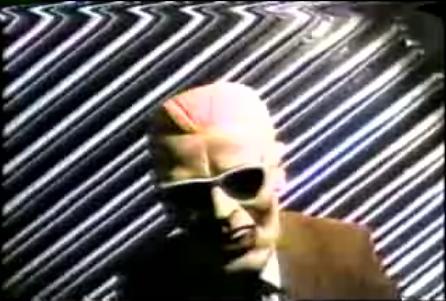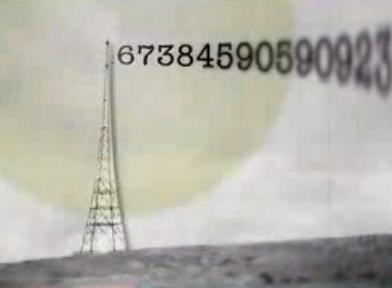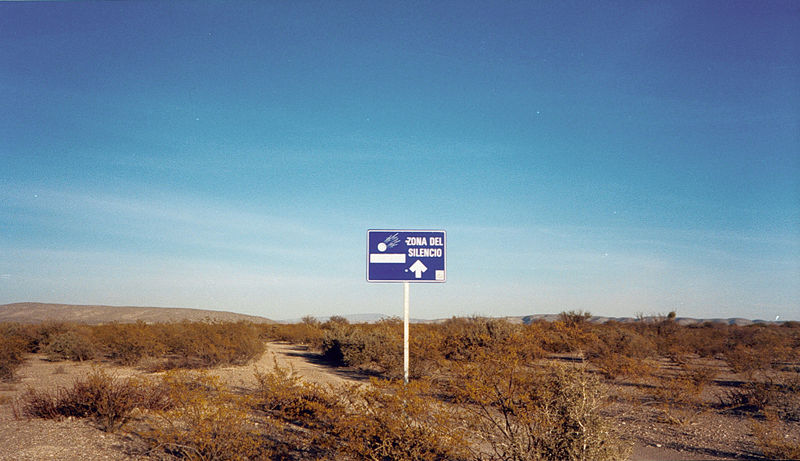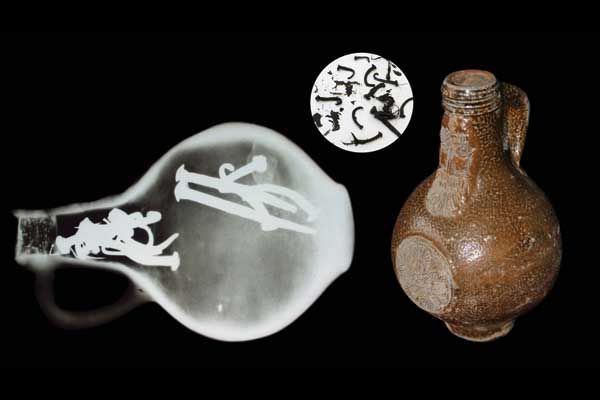A secret society is a club or organization whose activities and inner functioning are concealed from non-members Secret Societies are organized conspiracies working in secret to achieve a hidden agenda. Members use secrecy to protect themselves and their movement. Critics view Secret Societies as malevolent organizations working against the general will of mankind. ‘ Members may be required to conceal or deny their membership, and they are often sworn to hold the society’s secrets by an oath. Violating the oath may result in the application of severe sanctions. Like the most successful forgeries, the most effective secret societies are unknown beyond their adherents. Members may be required to deny the organization itself exists.
10. Ordo Templi Orientis

Ordo Templi Orientis is a mystic organization that was started in the early twentieth century. The group was established along the same lines as the less secretive Freemasons, and supposedly relies on ritual and occult practices as a means for members to move from one level of prestige to another within the organization. The general philosophy of the group was a belief in new age esoteric principles and practices as a method of realizing one’s true identity. Famed occultist and all-around eccentric Aleister Crowley composed much of the group’s lore, including a manifesto called the Mysteria Mystica Maxima, and he later became its head. After his death, the influence and popularity of Ordo Templi Orientis began to wane, but it still exists today and has various chapters scattered across the world, chiefly in the United States, the U.K., and other parts of Europe. As Aleister Crowley’s popularity as a new age figure has continued to grow, more and more of the teachings of the Ordo Templi Orientis have come to light. As such, the group makes much less of an attempt to be secretive today than it did in the past. This doesn’t mean that they don’t still have some bizarre practices. Chief among these is the group’s fixation on the sexual, especially their teachings on the “adoration of the phallus” and the magic of masturbation.
9. Krypteia

The Krypteia was an ancient rite of passage for promising young Spartan men who had completed their formal education. Naked and armed with only a knife, these 18-year-olds were instructed to survive by any means necessary as they patrolled the countryside in search of revolts and misdeeds. Those who survived (and indeed many did perish) were welcomed with open arms into the Spartan army. According to tradition, members of the Krypteia were permitted to kill serfs known as “Helots” without fear of blood guilt.
Follow Top 8 Secret Occult Societies

Proponents of the Lost Cosmonauts theory concede that Yuri Gagarin was the first man to survive space travel, but claim that the Soviet Union attempted to launch two or more manned space flights prior to Gagarin's, and that at least two cosmonauts died in the attempts. Another cosmonaut, Vladimir Ilyushin, is believed to have landed off-course and been held by the Chinese government. The Government of the Soviet Union supposedly suppressed this information, to prevent bad publicity during the height of the Cold War.
The evidence cited to support Lost Cosmonaut theories is generally not regarded as conclusive, and several cases have been confirmed as hoaxes. In the 1980s, American journalist James Oberg researched space-related disasters in the Soviet Union, but found no evidence of these Lost Cosmonauts. Since the collapse of the Soviet Union in the early 1990s, much previously restricted information is now available. Even with the availability of published Soviet archival material and memoirs of Russian space pioneers, no hard evidence has emerged to support the Lost Cosmonaut stories.
Allegations
Purported Czech information leak
In December 1959, an alleged high-ranking Czech Communist leaked information about many purported unofficial space shots. Aleksei Ledovsky was mentioned as being launched inside a converted R-5A rocket, two more names of alleged cosmonauts claimed to have perished under similar circumstances were Andrei Mitkov, Sergei Shiborin and Marya Gromova.[2] Also in 1959, pioneering space theoretician Hermann Oberth claimed that a pilot had been killed on a sub-orbital ballistic flight from Kapustin Yar in early 1958. He provided no source for the story. In December 1959, the Italian news agency Continentale repeated the claims that a series of cosmonaut deaths on suborbital flights had been revealed by a high-ranking Czech communist. No other evidence of Soviet sub-orbital manned flights ever came to light.
Heinlein
In 1960, Robert A. Heinlein wrote in his article Pravda means 'Truth' (reprinted in Expanded Universe) that on May 15, 1960, while traveling in Vilnius, in the Soviet Union, he was told by Red Army cadets that the Soviet Union had launched a man into orbit that day, but that later the same day it was denied by officials. Apparently, no issues of Pravda could be found in Vilnius or, reportedly, other Soviet cities for that date. Heinlein wrote that there was an orbital launch, later said to be unmanned, on that day, but that the retro-rockets had fired at the wrong altitude, making recovery efforts unsuccessful.
According to Gagarin's biography these rumours were likely started as a result of two Vostok missions, equipped with dummies (Ivan Ivanovich) and human voice tape recordings, to check if the radio worked, that were made just prior to Gagarin's flight.
In a U.S. press conference on February 23, 1962, Col. Barney Oldfield revealed that a space cabin had indeed been orbiting the earth since 1960, as it had become jammed into its booster rocket. According to the NASA NSSDC Master Catalog, Korabl Sputnik 1, designated at the time 1KP or Vostok 1P, did launch on May 15, 1960 (one year before Gagarin).[6] It was a prototype of the later Zenit and Vostok manned launchers. The onboard TDU had ordered the retrorockets to fire, but due to a malfunction, the firing put the craft into a higher orbit. The re-entry capsule lacked a heatshield as there were no plans to recover it. Engineers had planned to use the vessel's telemetry data to determine if the guidance system had functioned correctly, so recovery was unnecessary
Lost Cosmonaut Conspiracy

This is what happened on November 22, 1987. Sports anchor Dan Roan was live on The Nine O’Clock News on WGN in Chicago, narrating video of the day’s football highlights. The picture on the station monitors, as well as any TV tuned to WGN, suddenly began twitching and flickering. Then the clips from the Bears game gave way to static.
From the snow emerged a clear picture of the grinning face of Max Headroom, the titular character of a TV show and pitchman for “New Coke.” More accurately, it was man in a Max Headroom mask, standing in front of a swaying sheet of corrugated metal, awash in the sound of a high, harsh buzz.
The airwave hijacking, known in the television business as broadcast signal intrusion, was stopped quickly when WGN on-site engineers switched the modulation of the studio link to an alternate transmitter and less than 30 seconds later, the Max impostor, having said nothing, having hardly moved, was gone. Viewers were brought back to a visibly flustered Dan Roan saying, “Well, if you’re wondering what happened, so am I.”
The weirdness had only begun. About two hours after the first incident, viewers of the local PBS affiliate WTTW were interrupted in the middle of an episode of Doctor Who. In the middle of a scene, the signal pirate made another intrusion. The picture danced for a second and Max was back in front of the twirling metal panel again. The pirate, this time transmitting with audio, launched into a bizarre diatribe. While his words were distorted, viewers clearly made out several bits, including New Coke’s slogan, “Catch the Wave” (while Max holds a Pepsi can); a remark about sports reporter and announcer Chuck Swirsky; “Your love is fading”; humming of the theme song to TV series Clutch Cargo; and as Max held up a glove, “My brother is wearing the other one.”
The Max Headroom Broadcast Signal Intrusion Incident

For more than 30 years the Shortwave radio spectrum has been used by the worlds intelligence agencies to transmit secret messages. These messages are transmitted by hundreds of “Numbers Stations”.
Shortwave Numbers Stations are a perfect method of anonymous, one way communication. Spies located anywhere in the world can be communicated to by their masters via small, locally available, and unmodified Shortwave receivers. The encryption system used by Numbers Stations, known as a “one time pad” is unbreakable. Combine this with the fact that it is almost impossible to track down the message recipients once they are inserted into the enemy country, it becomes clear just how powerful the Numbers Station system is.
These stations use very rigid schedules, and transmit in many different languages, employing male and female voices repeating strings of numbers or phonetic letters day and night, all year round.
The voices are of varying pitches and intonation; there is even a German station (The Swedish Rhapsody) that transmits a female child's voice!
One might think that these espionage activities should have wound down considerably since the official “end of the cold war”, but nothing could be further from the truth. Numbers Stations (and by inference, spies) are as busy as ever, with many new and bizarre stations appearing since the fall of the Berlin wall.
The Number Station - Spy Radio

However, we need not travel so far to encounter a part of the world that is even more perplexing than these others, although it remains little known to most people: Mexico's mysterious, magical zona del silencio--the Zone of Silence, just four hundred miles away from El Paso, Texas. Deserts are often considered to be mysterious enough without the added weirdness that this patch of earth some four hundred miles from El Paso has to offer. It is a place which gobbles up radio and TV signals, and which has of late been associated with the UFO phenomenon.
There is much about our world that we still do not understand. Scientists tell us that natural mysteries abound in every corner of the Earth, from the lifeless desert of Chile to the bottomless depths of the Pacific, there are things we simply do not comprehend.
Perhaps this is the best way to describe a place in northern Mexico in the middle of the hot, searing, punishing Chihuahuan desert, a place commonly called the "Zone of Silence" (Zona-del-Silencio) by the few locals, scientists, students and visitors that wander there from time to time in search of answers. It is a strange place to experience, one of those mysterious natural wonders that beg our attention and muddle our senses. It is sometimes difficult to tell what is truth and what is not; to recognize what you see as real or not.
Drive 400 hundred miles west of El Paso and you enter into an unforgiving section of foreboding semiarid desert landscape that begs for mercy but offers none. The nearest settlement is Ceballos, a ragtag community that holds on precariously to its existence some 25 miles across the barren plain from the heart of "The Zone". Here life is challenging, and there is a constant, delicate balance between death and survival.
Unsolved Mysteries of Zone of Silence

The witch bottle is a very old spell device. Its purpose is to draw in and trap harmful intentions directed at its owner. Folk magic contends that the witch bottle protects against evil spirits and magical attack, and counteracts spells cast by witches.
A traditional witch bottle is a small flask, about 3 inches high, created from blue or green glass. Larger and rounder witch bottles, up to 9 inches high, were known as Greybeards and employed so-called Bartmann or Bellarmine jugs. Bellarmines were named after a particularly fearsome Catholic Inquisitor, Robert Bellarmine, who persecuted Protestants and was instrumental in the burning of Giordano Bruno . Greybeards and Bellarmines were not made of glass, but of brown or gray stoneware that was glazed with salt and embossed with severe bearded faces designed to scare off evil.
A witch, cunning man or woman, would prepare the witch's bottle. Historically, the witch's bottle contained the victim's (the person who believed they had a spell put on them, for example) urine, hair or nail clippings, or red thread from sprite traps. In recent years, the witch's bottle has taken on a nicer tone, filled with rosemary, needles and pins, and red wine. Historically and currently, the bottle is then buried at the farthest corner of the property, beneath the house hearth, or placed in an inconspicuous spot in the house. It is believed that after being buried, the bottle captures evil which is impaled on the pins and needles, drowned by the wine, and sent away by the rosemary.
Sometimes seawater or earth are used instead. Other types of Witch-bottles may contain sand, stones, knotted threads, feathers, shells, herbs, flowers, salt, vinegar, oil, coins, or ashes. A similar magical deceive is the "lemon and pins" charm.
Another variation is within the disposal of the bottle. Some witch's bottles were thrown into a fire and when they exploded, the spell was broken or the witch supposedly killed.
This form of "bottled spell" dates back hundreds of years, and were prevalent in Elizabethan England - especially Anglia, where superstitions and belief in witches were strong. The bottles were most often found buried under the fireplace, under the floor, and plastered inside walls.
The Witch-bottle was believed to be active as long as the bottle remained hidden and unbroken. People did go through a lot of trouble in hiding their Witch-bottles - those buried underneath fireplaces have been found only after the rest of the building has been torn down or otherwise disappeared. The origins of this tradition have been dated at least to the 16th century. In ancient times the bottles were made of stone and originally contained rusty nails, urine, thorns, hair, menstrual blood, and pieces of glass, wood, and bone.
Unsolved mysteries of witch bottle









